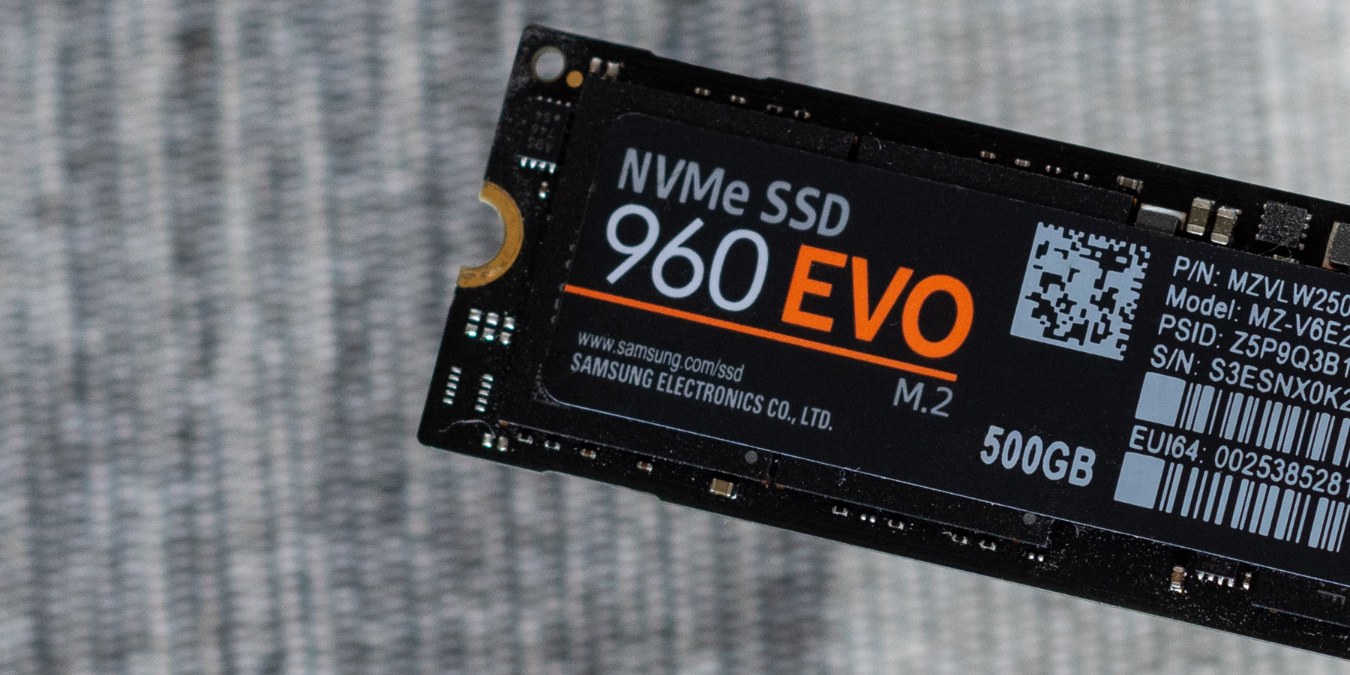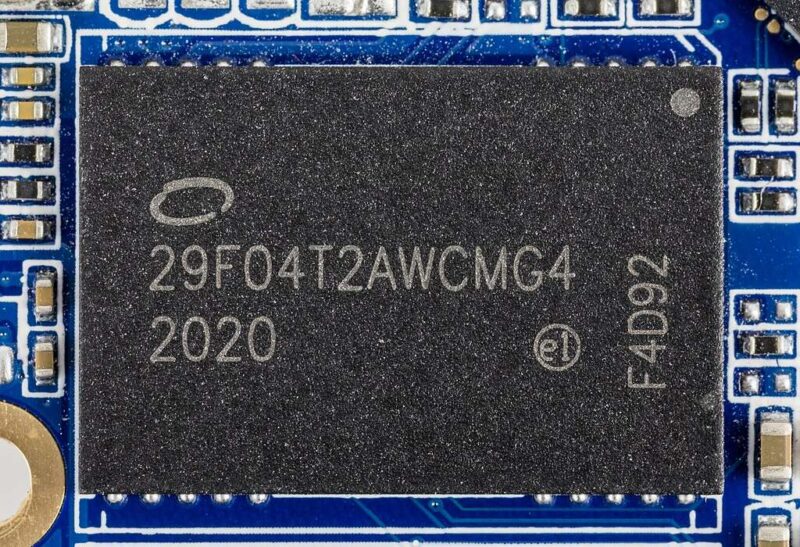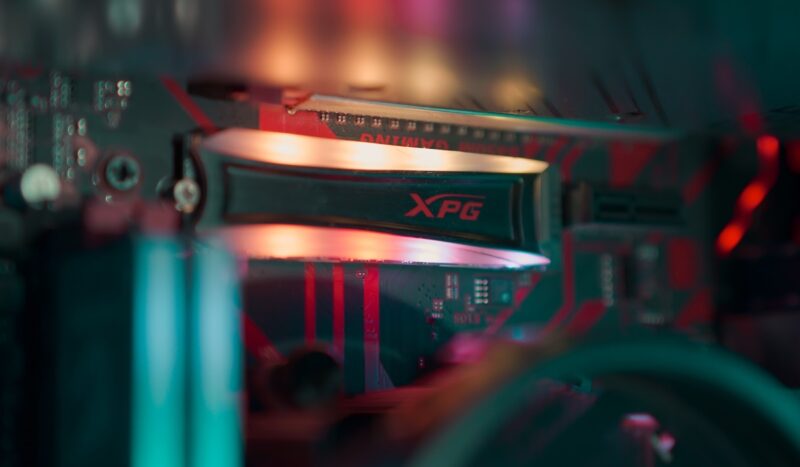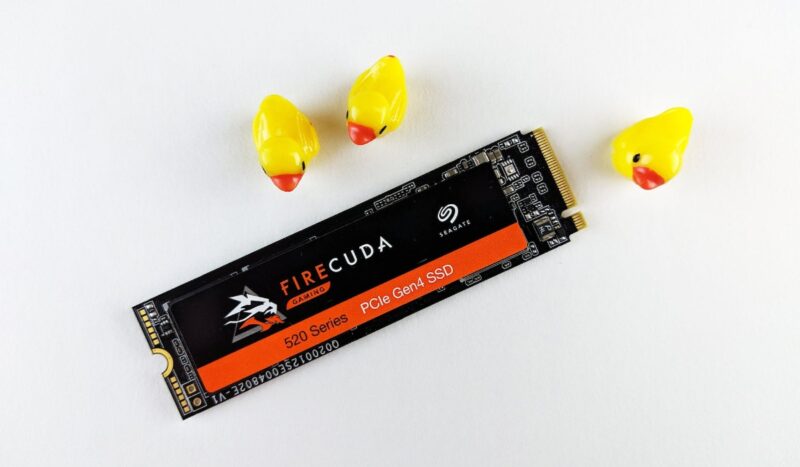
Solid-State Drives are a great way to boost your PC’s performance. Unfortunately, they’re not all created equal. One of the biggest differences between all of the different solid-state drives on the market is whether they are DRAM or DRAM-less. But what’s the difference between these two types of SSDs? And which drive is better? Let’s compare DRAM vs. DRAM-less SSD options.
FYI: Which one should you get? SATA vs. NVMe? This guide will help you decide.
What Is DRAM?
Whether you’re considering buying a 2.5″ SATA SSD or an M.2 NVMe SSD, you’ve probably noticed a little something called DRAM. Some drives have DRAM, while others do not (aptly referred to as DRAM-less).

SSDs store data on a number of memory cells known as NAND flash. During the SSD’s lifespan, data is moved around these cells quite a bit. It does this automatically to ensure that no single memory cell is worn out due to repeated reading/writing. As a result, your SSD needs to keep a map of where data is located on the drive. This is so that when you want to launch a program, run a game, or open a file, your SSD will know where to find it.
That map is stored on your SSD’s DRAM, or Dynamic Random Access Memory, acting as a cache to store data temporarily.
DRAM vs. DRAM-less SSDs: At a Glance
Both DRAM and DRAM-less SSDs are included in the best SSDs of 2023. Each type of storage has suitable use cases, and you can even choose a combination of a DRAM and DRAM-less drive for your system.
| DRAM SSD | DRAM-less SSD | |
|---|---|---|
| Performance | Faster performance | Relatively slower |
| Price | Premium models are pricey | More cost-effective |
| Power Consumption | Consumes slightly more power | Consumes lesser power |
| Lifespan | Higher endurance and warranty | Lower endurance and warranty |
DRAM vs. DRAM-less SSDs: Performance
Solid-state drives with a dedicated DRAM chip boast better performance than DRAM-less SSDs, as DRAM is much faster than NAND flash memory. Instead of your PC having to rummage around in your SSD for the relevant data, your PC can go straight to the faster DRAM cache. As a result, your PC won’t have to wait very long for your SSD to retrieve the data it needs. This results in a much faster experience for the end user.

DRAM-less SSDs store the map of data straight to the slower NAND Flash memory. This results in relatively slower performance when compared to DRAM SSDs. But, over the years, DRAM-less SSDs have started using Host Memory Buffer (HMB): the process of using your computer’s system memory as DRAM. This is slower than dedicated DRAM but still faster than flash memory.
Thanks to HMB, DRAM-less SSDs like the WD_BLACK SN770, deliver performance similar to top-notch DRAM SSDs, like the Samsung 980 Pro.
DRAM vs. DRAM-less SSDs: Price
By not having a dedicated DRAM chip on the drive, DRAM-less SSDs cost less than DRAM SSDs. It used to be that DRAM SSDs retailed for a significant premium. But, with time, SSD prices started crashing, leaving them at an all-time low. Both types of SSDs can be bought for relatively affordable prices.

For instance, you can buy the Samsung 980 Pro, a DRAM SSD, for around $120 for the 2TB model. Similarly, you can also get a DRAM-less SSD like the WD_BLACK SN770 for $100 for the 2TB model. The price delta between DRAM and DRAM-less drives is getting smaller every year, but when you’re building a value-for-money PC, DRAM-less drives have improved enough to be the recommended option.
Good to know: shopping for a new SSD? Learn what to look for when buying an SSD.
DRAM vs. DRAM-less SSDs: Power Consumption
Due to the absence of an additional DRAM component, DRAM-less SSDs consume less power than DRAM drives. While this might not be a factor for desktop users, power efficiency can be beneficial for laptops and other battery-dependent devices like gaming handhelds.

High-end DRAM SSDs that consume a lot of power can also get significantly hot during stress, especially without a decent heatsink on them. If airflow or heat dissipation is a concern for you, you can get a budget DRAM-less SSD without losing too much performance.
FYI: find out all you need to know about the best Steam Deck alternatives.
DRAM vs. DRAM-less SSDs: Lifespan
Although SSDs, DRAM or DRAM-less, come with a respectable warranty, DRAM drives still see longer coverage, as DRAM-less drives store the data map directly to the NAND flash, causing more wear and tear on the memory cells. Regrettably, this can significantly decrease the SSD’s lifespan.

While you’ll still get a three-year warranty with most DRAM-less SSDs, many DRAM SSDs from reputed brands offer up to five-year warranties.
DRAM-less SSDs store the map of data straight to the NAND Flash memory, and NAND memory is slower than DRAM. Unfortunately, this results in slower overall performance. Additionally, storing the map directly to the NAND flash means more wear and tear on the memory cells. Regrettably, this can significantly decrease the SSD’s life span. This is usually why DRAM-less SSDs have a shorter warranty period than SSDs with DRAM.
Tip: learn about the things you must do when running an SSD in Windows.
Which SSD to Buy: DRAM or DRAM-less
For the enthusiast, a DRAM SSD is the better option due to:
- Superior random and sustained read/write performance
- Higher endurance and warranty coverage
- Typically higher-quality internals

But this doesn’t mean DRAM-less SSDs are bad purchases. If you’re not a professional or don’t find yourself transferring large files too often, a DRAM-less drive is perfect for you due to:
- Remarkably similar performance to DRAM SSDs
- Lower price compared to DRAM SSDs
- Lower power consumption if you’re on a laptop
If you’re looking to clone Windows to an SSD, we can help you find the best tools for the job.
Image credit: Flickr
Our latest tutorials delivered straight to your inbox